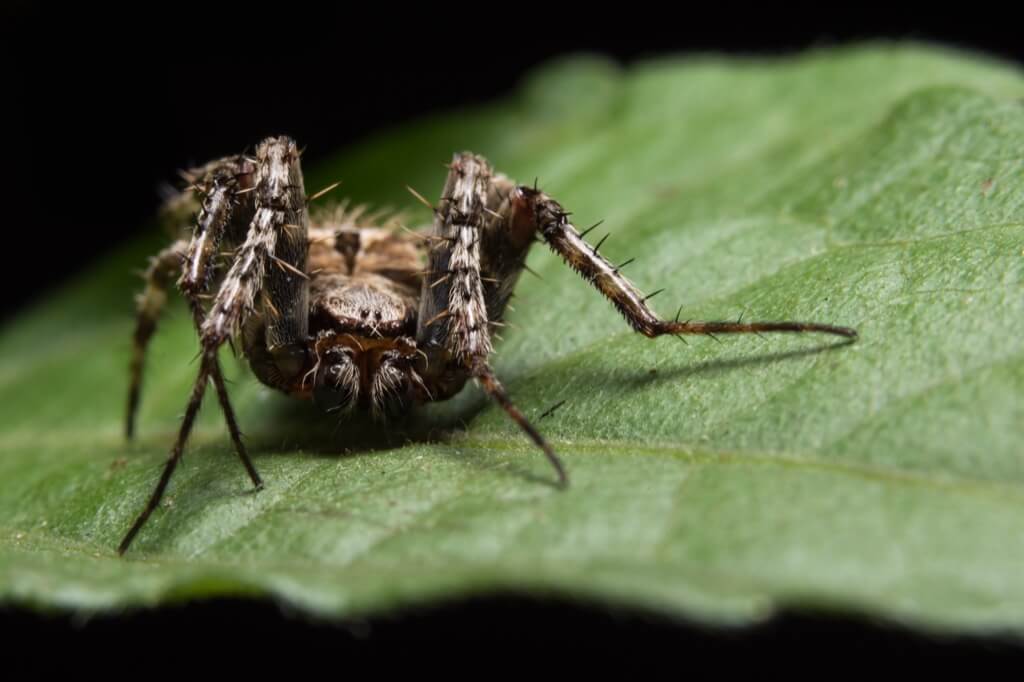Gold, in its purest form, boasts a signature golden hue and is known as 24-karat…
Insect Winter Hideaways Decoded
- by Mamparra

As winter blankets the world in a frigid embrace, life becomes an extraordinary challenge for insects. These small, cold-blooded organisms face the daunting task of surviving in subzero temperatures. Yet, nature has equipped them with a range of remarkable adaptations and strategies that enable them to endure the harshest of winters. In this comprehensive exploration, we will delve deep into the captivating world of insect winter survival, unraveling the secrets of their resilience, and shedding light on their fascinating strategies.
One of the most iconic and widely celebrated strategies for escaping winter’s harsh grip is migration. In the insect world, no migration is as awe-inspiring as that of the Monarch Butterfly. This annual spectacle is a testament to nature’s navigational wonders.
Each year, from August to October, a remarkable transformation takes place in North America. Monarch Butterflies from regions east of the Rocky Mountains embark on an arduous journey southward, seeking the warmth of Mexico. Simultaneously, their counterparts from the western regions make a similar migration to the temperate shores of California. This extraordinary migration covers thousands of miles and showcases the incredible power of nature’s navigational marvels.
While migration is a well-known strategy, the world of insects offers even more intriguing variations of winter survival. Among these are freeze avoidance and freeze tolerance, strategies as diverse as the insects themselves.
Imagine you’re an insect, acutely aware of the impending cold. Rather than continuing to forage for food, you opt for diapause, a state of essentially halted development. Diapause allows you to conserve energy and avoid the nutritional challenges of winter. However, this doesn’t solve the problem of sub-zero temperatures.
To address the issue of freezing temperatures, insects reduce the water content in their bodies. Some, like the Antarctic midge, take extreme measures, accumulating sugars in their cells to lower the freezing point of remaining water and almost completely dehydrating themselves. This clever tactic increases the concentration of sugars, rendering them less susceptible to freezing.
The Cryoprotectants of Insects
Insects have developed their own version of antifreeze, known as cryoprotectants. Glycerol, in particular, is a commonly used cryoprotectant. As temperatures drop, glycogen is converted into glycerol at an accelerated rate. This elevation in glycerol concentration enhances their ability to fend off freezing.
Insects often employ strategies to prevent ice nucleation, the process by which ice crystals form. In the absence of nucleation sites, water can remain in a liquid state below freezing temperatures. Many freeze-resistant insects break down potential nucleation sites, such as food particles, bacteria, and even some proteins. These tactics include eliminating lipoproteins from their hemolymph (the insect equivalent of blood) and reducing food intake to cleanse the digestive tract.
Even with their impressive adaptations, insects often need a safe place to weather the winter. Some insects craft their winter sanctuaries using nature’s own defenses, while others seek refuge in various environments to ensure their survival.
Imagine an insect that builds its winter shelter by utilizing a plant’s natural defenses. The Goldenrod Gall Moth caterpillar does just that. As it attaches itself to the plant, the plant forms a gall, a growth resembling cancer, around the insect, shielding it from the elements.
For many species, survival means finding cozy nooks to hibernate. The eggs or larvae of numerous insects spend the winter cocooned in protective layers, nestled beneath mounds of leaves or buried in the soil. These environments offer more moderate and controlled temperatures. Moreover, the frozen ground provides additional protection from predators, ensuring a secure winter hideaway.
As we embark on this journey through the diverse strategies of insect winter survival, we uncover a world of extraordinary adaptations and natural wonders. From epic migrations to diapause, cryoprotectants, and ingenious shelters, insects demonstrate remarkable resilience in the face of frigid adversity. Their ability to thrive in the coldest of seasons serves as a testament to the intricate web of life on our planet.
This exploration not only provides insights into the fascinating strategies of insects but also deepens our appreciation for the intricacies of the natural world. The next time you encounter a snow-covered landscape, take a moment to consider the incredible tales of survival unfolding beneath the frozen surface. Insects, in their own remarkable ways, endure the chill of winter and emerge triumphant in the warmth of spring.

In the world of finance, where giants like Warren Buffet now roam, there once lived…

The popular belief linking the Canary Islands’ name to the canary bird finds itself entangled…
A Winter Wonderland of Insect Survival
As we continue our expedition into the world of insect winter survival, we discover a realm where evolution has painted a canvas of ingenuity and adaptation. From the awe-inspiring migrations of Monarch Butterflies to the microscopic wonders of cryoprotectants, insects have harnessed the power of nature to overcome the challenges of winter.
In this winter wonderland, we witness the complex interplay between biology, chemistry, and environment, culminating in strategies that have allowed insects to thrive in the harshest of conditions. Each adaptation, from diapause to dehydration, serves as a testament to the tenacity of life and the ceaseless drive of nature to explore new frontiers.
Additional Facts
While many insects hibernate or enter diapause in winter, ladybugs take an alternative approach. They migrate to higher elevations, such as mountain ranges, to escape the cold. These mass migrations can involve millions of ladybugs and provide a natural spectacle.
Ants, known for their complex social structures, hibernate in their underground colonies during winter. They gather food reserves in the warmer months and enter a state of reduced activity, relying on stored food until spring arrives.
Snow fleas, tiny hexapods found in snowy regions, are not actually fleas. They are a type of springtail. They possess a protein in their body fluids that acts as antifreeze, allowing them to remain active even on the surface of snow during winter.
Some insects, like carpenter bees, burrow into wood during winter. They create galleries within wooden structures to hibernate safely. This behavior can sometimes lead to damage in wooden buildings.
Beetle larvae, such as those of the Colorado potato beetle, overwinter by burrowing deep into the soil. They remain below the frost line to avoid freezing temperatures, emerging as adults when warmer weather returns.
While it’s well-known that butterflies overwinter as chrysalises, some species, like the Mourning Cloak butterfly, spend the entire winter in this pupal stage. They use antifreeze compounds in their bodies to survive freezing temperatures.
Insects like the caddisfly lay their eggs in or near water bodies in late fall. The eggs become encased in ice, offering protection from harsh winter conditions. They hatch in spring when the ice melts.
Bark beetles, notorious for their damage to trees, seek refuge from winter in the spaces between tree bark and wood. This location provides insulation against the cold and predators.
Aquatic insects like dragonfly nymphs and mayfly nymphs adapt to winter by staying active beneath the ice. They continue to feed on aquatic organisms in this harsh environment.
Stoneflies are known for their winter flights, which are unique among insects. On sunny winter days, stoneflies can be seen flying over snow-covered landscapes. They return to the water to lay their eggs, completing their life cycle.
Our journey through the intricacies of insect winter survival not only reveals the astonishing strategies of these tiny creatures but also invites us to marvel at the grandeur of the natural world. It reminds us that beneath the snow and frost lies a thriving microcosm of life, where survival is an art form and adaptation is the masterpiece.
In this winter odyssey, we gain a deeper understanding of the delicate balance that sustains life on our planet. We learn that even in the face of adversity, nature’s creations find a way to endure, thrive, and emerge, year after year, as the seasons change.

The popular belief linking the Canary Islands’ name to the canary bird finds itself entangled…

The Rosetta Stone’s discovery and its pivotal role in deciphering ancient Egyptian hieroglyphics is a…

In the annals of history, few figures emerge with as much mystery and intrigue as…
As winter blankets the world in a frigid embrace, life becomes an extraordinary challenge for insects. These small, cold-blooded organisms face the daunting task of surviving in subzero temperatures. Yet, nature has equipped them with a range of remarkable adaptations and strategies that enable them to endure the harshest of winters. In this comprehensive exploration,…
Recent Mamparras
- Zwai Bala – The Musical Pioneer Who Helped Shape South Africa’s Sound
- Is This the Worst Own Goal Ever? Watch and Decide
- Mamparras Spend R7.7 Billion From 25th to the 31st of December 2024
- Why Do Liberals Think Trump Supporters Are Mamparas?
- Indepth Look at the Online Thrill to Grill Casino Game
- Artist Discovers 2000yo Roman Bust at Texas Goodwill for $34
- Nobuntu (Mamparra-nobs) Mkhize Disrupts FlySafair Flight – Gets Arrested
- Oscar Pistorius Walks Free, But Where is Reeva’s Justice?
- The Accidental Aboriginal’s Legacy
- The Origins of Oktoberfest
- Fascinating Quick Facts

